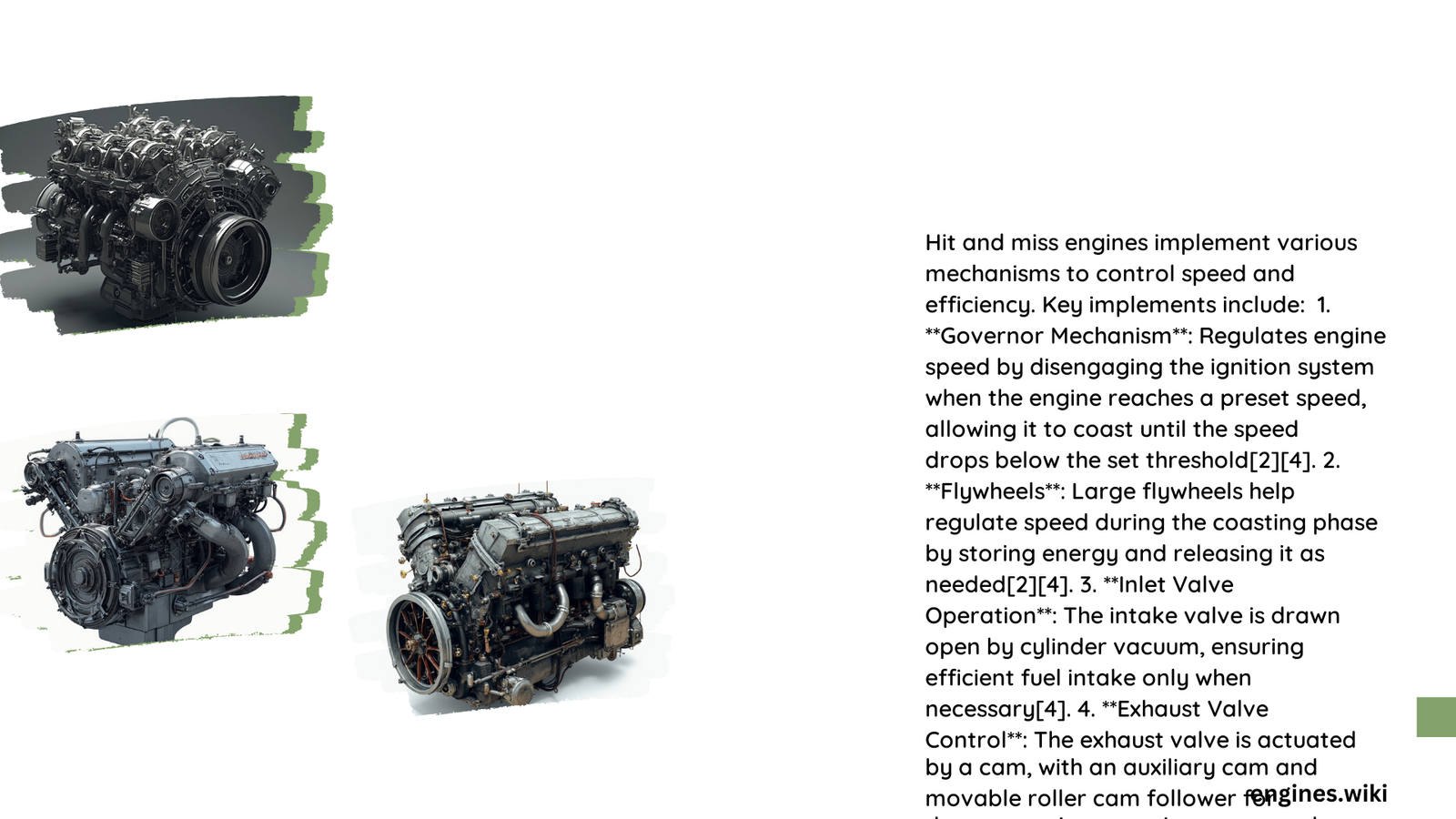Hit and miss engine implements represent a fascinating technological marvel from the late 19th and early 20th centuries, serving as critical power sources for agricultural and industrial applications. These unique engines operated on a distinctive governor-controlled mechanism that allowed them to fire intermittently, conserving fuel and providing consistent power output across various mechanical tasks.
What Are Hit and Miss Engine Implements?
Hit and miss engine implements were stationary power sources characterized by their unique operational mechanism where engines would “hit” (fire) and “miss” (not fire) based on speed regulation. These engines were predominantly used in farming, sawmills, and early industrial settings to power machinery like:
- Grain threshers
- Water pumps
- Sawmill equipment
- Agricultural implements
- Electrical generators
How Do Hit and Miss Engines Function?
The operational principle of hit and miss engines revolves around a sophisticated governor mechanism that controls engine speed. When the engine’s rotational speed drops below a predetermined threshold, the governor allows fuel and spark to enter the cylinder, causing combustion. Conversely, when the speed exceeds the set limit, the engine temporarily stops firing.
Key Specifications of Hit and Miss Engines

| Parameter | Typical Range |
|---|---|
| Bore Size | 4-10 inches |
| Stroke Length | Similar to bore size |
| RPM | 250-600 |
| Horsepower | 2-30 HP |
What Makes Hit and Miss Engines Unique?
- Fuel Efficiency: These engines were remarkably efficient for their time, consuming minimal fuel during idle periods.
- Mechanical Simplicity: Featuring fewer moving parts compared to modern engines.
- Robust Construction: Primarily manufactured using cast iron, ensuring durability.
Performance Characteristics
Hit and miss engine implements demonstrated exceptional performance under various load conditions:
- Low-Speed Operation: Typically ran between 250-600 RPM
- Consistent Power Delivery: Maintained steady output through governor mechanism
- Fuel Consumption: Approximately 1-4 gallons per hour depending on load
What Were Common Applications?
Hit and miss engines found widespread use across multiple domains:
- Agricultural machinery
- Small-scale industrial equipment
- Water pumping systems
- Electrical generation
- Woodworking tools
Maintenance and Repair Considerations
Maintaining these historical engines requires specialized knowledge:
- Regular Lubrication: Critical for reducing friction and wear
- Periodic Governor Adjustment: Ensures optimal performance
- Valve Clearance Inspection: Maintains engine efficiency
- Fuel System Cleaning: Prevents potential blockages
How to Preserve Hit and Miss Engines?
Preservation techniques include:
- Store in dry, temperature-controlled environments
- Use appropriate lubricants
- Perform regular, gentle exercise of mechanical components
- Protect from rust and corrosion
- Maintain original paint and mechanical integrity
Technical Challenges and Solutions
Hit and miss engines presented unique engineering challenges:
- Cooling Management: Water or air-cooling systems
- Ignition Timing: Manual adjustment required
- Fuel Mixture Control: Precise needle valve mechanisms
What Skills Are Needed for Restoration?
Restoring hit and miss engine implements demands:
- Mechanical engineering knowledge
- Metalworking skills
- Understanding of historical manufacturing techniques
- Patience and meticulous attention to detail
Modern Significance
While obsolete in industrial applications, hit and miss engines remain:
- Valuable collector’s items
- Educational tools for understanding mechanical engineering
- Demonstration pieces in museums and historical exhibitions
Reference:
– Stationary Engine List
– SmokStak Antique Engine Forum
– Hit and Miss Engine Wikipedia
